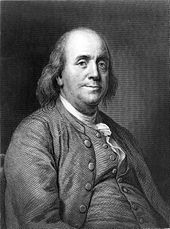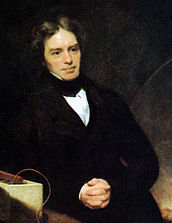Long before any knowledge of electricity existed people were aware of shocks from electric fish. Ancient Egyptian texts dating from 2750 BC referred to these fish as the "Thunderer of the Nile", and described them as the "protectors" of all other fish. Electric fish were again reported millennia later by ancient Greek, Roman and Arabic naturalists and physicians.[2] Several ancient writers, such as Pliny the Elder and Scribonius Largus, attested to the numbing effect of electric shocks delivered by catfish and torpedo rays, and knew that such shocks could travel along conducting objects.[3] Patients suffering from ailments such as gout or headache were directed to touch electric fish in the hope that the powerful jolt might cure them.[4] Possibly the earliest and nearest approach to the discovery of the identity of lightning, and electricity from any other source, is to be attributed to the Arabs, who before the 15th century had the Arabic word for lightning (raad) applied to the electric ray.[5]

Ancient cultures around the Mediterranean knew that certain objects, such as rods of amber, could be rubbed with cat's fur to attract light objects like feathers. Thales of Miletos made a series of observations on static electricity around 600 BC, from which he believed that friction rendered amber magnetic, in contrast to minerals such as magnetite, which needed no rubbing.[6][7] Thales was incorrect in believing the attraction was due to a magnetic effect, but later science would prove a link between magnetism and electricity. According to a controversial theory, the Parthians may have had knowledge of electroplating, based on the 1936 discovery of the Baghdad Battery, which resembles a galvanic cell, though it is uncertain whether the artifact was electrical in nature.[8]

Electricity would remain little more than an intellectual curiosity for millennia until 1600, when the English scientist William Gilbert made a careful study of electricity and magnetism, distinguishing the lodestone effect from static electricity produced by rubbing amber.[6] He coined the New Latin word electricus ("of amber" or "like amber", from ήλεκτρον [elektron], the Greek word for "amber") to refer to the property of attracting small objects after being rubbed.[9] This association gave rise to the English words "electric" and "electricity", which made their first appearance in print in Thomas Browne's Pseudodoxia Epidemica of 1646.[10]
Further work was conducted by Otto von Guericke, Robert Boyle, Stephen Gray and C. F. du Fay. In the 18th century, Benjamin Franklin conducted extensive research in electricity, selling his possessions to fund his work. In June 1752 he is reputed to have attached a metal key to the bottom of a dampened kite string and flown the kite in a storm-threatened sky.[11] A succession of sparks jumping from the key to the back of his hand showed that lightning was indeed electrical in nature.[12]

In 1791, Luigi Galvani published his discovery of bioelectricity, demonstrating that electricity was the medium by which nerve cells passed signals to the muscles.[13] Alessandro Volta's battery, or voltaic pile, of 1800, made from alternating layers of zinc and copper, provided scientists with a more reliable source of electrical energy than the electrostatic machines previously used.[13] The recognition of electromagnetism, the unity of electric and magnetic phenomena, is due to Hans Christian Ørsted and André-Marie Ampère in 1819-1820; Michael Faraday invented the electric motor in 1821, and Georg Ohm mathematically analysed the electrical circuit in 1827.[13] Electricity and magnetism (and light) were definitively linked by James Clerk Maxwell, in particular in his "On Physical Lines of Force" in 1861 and 1862.[14]
While it had been the early 19th century that had seen rapid progress in electrical science, the late 19th century would see the greatest progress in electrical engineering. Through such people as Nikola Tesla, Galileo Ferraris, Oliver Heaviside, Thomas Edison, Ottó Bláthy, Ányos Jedlik, Sir Charles Parsons, Joseph Swan, George Westinghouse, Ernst Werner von Siemens, Alexander Graham Bell and Lord Kelvin, electricity was turned from a scientific curiosity into an essential tool for modern life, becoming a driving force for the Second Industrial Revolution.[15]
source : http://en.wikipedia.org/wiki/Electricity
source : http://en.wikipedia.org/wiki/Electricity



 6:02 AM
6:02 AM
 JONI IRAWAN
JONI IRAWAN

 Posted in:
Posted in: 

0 komentar:
Post a Comment
Thank atas komentarnya